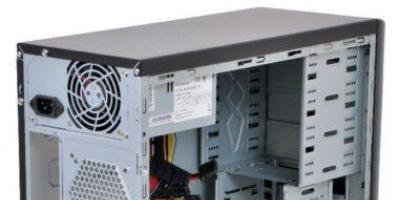Nailers or nail guns are used in a variety of industries, from construction to carpentry and furniture shops. Despite the relatively low shot energy, pneumatic and electric nailers remain at the peak of popularity, and we’ll talk about them in this review.
Scope of use
Nailers are most widely used in the United States and Canada, where frame house construction has been widely practiced for more than a century. But in the CIS, nailers are still considered superfluous: after all, hand hammers are much more familiar and familiar. However, in some circumstances, a nail gun can be indispensable: first of all, for large volumes of work and requirements for a clean surface, on which there should be no traces of the striker of a conventional hammer.

Pneumatic and electric tools have a wide range of power, which in practice is expressed in length fastening element. The most powerful nailers are used primarily in the construction of frame wooden houses, where it is important not only the ability to immediately drive a nail more than 120 mm long into the fastening unit, but also accuracy and a guarantee that the parts will not move during the fixation process. Nailers with lower productivity are optimal for assembly rafter systems, installation of sheathing, sheathing and roofing.

The least powerful nailers have high precision and are called hairpin nailers or micronailers. They are mainly used in carpentry for attaching all kinds of decors and moldings to furniture elements, as well as for temporary fixation of glued parts. Hidden fastening can also be important in interior decoration: when installing skirting boards, platbands, lining and a wide range wooden products of the most varied kind.
Prices and purchasing issues
The only factor that prevents nailers from being used everywhere is their high cost. On average, the price of nail guns is 2-2.5 times higher than in countries where such a tool is considered the main one for making connections with nails. Of course, there are options to make a custom order or purchase nails directly from Chinese suppliers, but long terms delivery and difficulties in communication make this method of purchase an exception. Therefore, let’s briefly go over the main price categories of nailers presented in Russian stores, taking pneumatic tools as an example.
The budget series of nail guns is represented by purebred Chinese brands such as FUBAG, MATRIX, Realkey and others like them. The range of fasteners is usually limited to 90-100 mm, in terms of cost even the most powerful tool this category fits into the framework of 10-12 thousand rubles. The inexpensive tool is ideally suited as the main workhorse for self-construction frame house from the foundation to the roof: a resource of 10-15 thousand shots will be quite enough.
 Pneumatic nailer Matrix 57405 for nails from 10 to 32 mm
Pneumatic nailer Matrix 57405 for nails from 10 to 32 mm
For semi professional use Nail guns manufactured by Bostitch are considered the most suitable. This is a subsidiary of the global brand Black&Decker, the tool has a very good performance and a long service life. The cost of such nailers is 20-25 thousand rubles for a fastener length of up to 90 mm and just over 30 thousand rubles for the most powerful models without unnecessary bells and whistles. Panrex tools are in the same price category - analogues of Bostitch made in Taiwan. This category also contains some original DeWalt tools, a major manufacturer of woodworking equipment in the United States.
 Nailer Bostitch F21PL
Nailer Bostitch F21PL
The most expensive positions are occupied by highly specialized tools: from Hitachi, Bosh and Makita, to the most expensive nailers and hairpins SENCO and Paslode made in the USA. In this group, the cost of a nail gun practically does not depend on its power; the high price is dictated by the excellent ergonomics, reliability and reliability of the tool. The cost of a hammer with a fastener length of up to 50 mm can reach 60 thousand rubles: such a tool is intended exclusively for professional use, unlike representatives of the previous group, which are often purchased for a specific object with the expectation of a quick payback.

Practical difference between electric and pneumatic tools
In operation, electric and pneumatic water guns demonstrate approximately the same efficiency. However, there are two facets in which significant differences are observed, the first of which is economic. The cost of a cordless tool is on average 30-50% higher than a pneumatic one. Here, however, it is worth making a reservation: pneumatic hammers also require a compressor and a hose, and when using several nailers with different operating pressures at the same time, a splitter with a gearbox is also required. The other side of the price issue is the cost of a shot, which is almost half as much for a pneumatic tool.

The second aspect is ease of use. A cordless tool is heavier: on the one hand, this provides more confident pressure when working with long fasteners and reduces recoil, on the other hand, it tires your hands extremely. The absence of hoses, connection to a compressor and the presence of electricity at the site is a separate plus, however, autonomy is limited by a rather short operating time: only 300-400 shots on a full battery charge.
Features of choosing battery nailers
Electric hammers use the energy of compressed air in the same way as a pneumatic tool. The only difference is that the cordless nail gun has a built-in supercharger. This principle of operation causes high similarity in the design of the main working mechanism, but at the same time there are significant differences in maintenance and application.
Almost all cordless nailers use Li-Ion batteries; only such batteries provide sufficient capacity and current output. Most models are equipped with one battery, so you should make sure in advance that it is possible to purchase an additional one, and one that is compatible with the existing charger slot. It is desirable that the nailer series be widespread enough so that after 3-4 years the batteries do not end up being discontinued.
The limited performance of the built-in supercharger does not allow for a rate of fire of more than 1.5-2 strikes per second, while after 1-1.5 years of operation due to battery wear in serial mode, it will be possible to hammer in only 1 nail per second, or even less. For many cordless nailers, there is a problem in choosing fasteners; often only branded nails and pins are allowed.
What you need to know about pneumatics
Pneumatic nailers have a simpler design and therefore demonstrate high reliability. The main criteria when choosing are operating pressure and air flow per shot; based on these parameters, you need to select the appropriate compressor performance and receiver volume.
Pneumatic strikers are divided into oil-free and requiring periodic lubrication - a few drops of special oil into the compressed air supply pipe. A tool that internal surfaces The pistons are Teflon coated and do not form microscopic splashes during operation, and are therefore ideal for carpentry workshops.
The power of pneumatic nailers is not limited by weight and dimensions, so such a tool can easily work with fasteners longer than 100 mm, consistently providing a rate of fire of up to three blows per minute thanks to instant cocking and a large receiver volume. Pneumatic hammers allow a freer choice of nails and studs of completely different types.
Dimensions, calibers and type of fasteners
The type of fastener directly determines the purpose of the nailer. There are two classification systems: length is determined in the metric system of measures, thickness - by gauge according to the AWG system, that is, the nominal cross-section of the wire. The length of the fastener varies from 25 mm to 130 mm, thickness - from 23 (the thinnest) to 11 (the thickest) gauge. It is noteworthy that only 15-gauge nails have a round cross-section, all other fasteners are rectangular studs. For each nailer, only a certain caliber of fasteners can be used, and the length can vary within small limits.

Nailers are designed to work with one of three types of fasteners: tape-drum, straight and inclined cassette. It is better to choose a tool based on which fasteners are most accessible and cheap; usually in this regard, drum nailers and hairpin nailers with a straight clip are more profitable. There is, however, an exception: a nail gun with a fairly large drum is less suitable for working in hard-to-reach places.
Based on the size of the nails and pins used, nailers are divided according to their purpose into:
- finishing (caliber from 23 to 14, length up to 64 mm);
- sheathing (15 and 14 gauge, depth up to 70 mm);
- rack and frame (nails in inclined, straight and drum frames 21° and 34°, caliber up to 11, length up to 130 mm);
- pallet (caliber up to 9, length up to 130 mm);
- roofing (caliber up to 14, length from 19 to 45 mm).
We also note that within a certain caliber and length range can be used different types nails and pins: smooth, rough, screw, etc.
Design, maintenance and additional functions
When purchasing a nailer, you need to pay attention to some design features. The most important indicator is how easily the feed head can be disassembled. Quite often a nail or pin becomes bent and has to be removed from the tool manually. For this, some manufacturers (Bostitch, DeWalt) provide quick-release caps, while others use a screw fastening.

Some nailers require periodic cleaning. This mainly applies to nail guns with straight and inclined clips: dust and grains of varnish holding the fasteners in the cassette make it difficult to feed pins into the head. The internal mechanisms need to be cleaned if there is no filter and moisture sorbent in the compressed air supply system.

Nailers have different system insurance against accidental descent. So, double-trigger fuses can be used, or activation by pressing the spout. The most convenient is the SmartPoint system, which is present in the newest representatives of the Bostitch line. It is good if the nailer is equipped with an impact force regulator, which allows you to select the depth of recessing of the fasteners. From additional functions Let's also mention the backlight working area for battery-powered nail guns and the ability to idle air for purging for pneumatic hammers.
Ergonomics, weight and balance
Finally, we must not forget that nailers are a tool with increased requirements for ease of use. The weight of the hammer must be selected in accordance with the “heaviness” of the work: for assembling frames, nail guns weighing from 5-6 kg are optimal, for fine work- up to 1.5 kg.

Make sure that the tool is well balanced: when hanging on two fingers, the support should be in the area of the trigger lever or slightly lower. It is optimal to have rubber pads; the thickness of the handle should correspond to the size of the hand for the most secure grip.

Pneumatic equipment cannot be imagined without a compressor. When buying, for example, a nail gun, you should immediately think about what kind of compressor you will need for it. Compressors can be divided into household and professional. The division occurs depending on the area of its application, wear resistance and performance; accordingly, the former will be cheaper and the latter more powerful.
Compressor selection steps:
Compressor type selection
PISTON COMPRESSORS
IN oil-free coaxial compressors The piston group is made from special materials that minimize the coefficient of friction. The direct drive design is extremely simple, which makes it possible to achieve a low cost of the compressor. As for the advantages: they give the output fresh air and are very affordable. The disadvantages include the inability to withstand long-term loads and limited resource.
IN oil coaxial compressors all internal parts of the piston group are lubricated with oil. As a result, a film is formed between moving parts, which prevents direct contact of metal parts with each other. The advantages include good performance and ease of operation and maintenance. The disadvantages are: the need to maintain the oil level and intended for intermittent rather than continuous use.
IN belt compressors a belt drive is used from an electric motor to a pulley that rotates the flywheel of the compressor head. The flywheel allows the compressor head to operate at a lower frequency than the engine, which increases its service life. The flywheel is also used for air cooling of the compressor head during operation. From advantages increased resource and high efficiency. TO cons can be attributed to the extremely high noise level during operation.
 |
 |
|
| Principle of operation |
SCREW COMPRESSORS
Air is injected sequentially - through a screw pair, which rotates in a tank with oil. This ensures a low coefficient of friction and effective heat removal from the working area. The oil wedge creates excellent conditions for air compression. pros This compressor ensures round-the-clock operation, high performance, low noise level. Main minus high price.
 |
 |
|
| Principle of operation | Fubag Legend 7.5/10-200 E DOL |
Calculation of required performance
IN general view The formula for selecting a compressor looks like this:
Tool air consumption * 1.2< Производительность компрессора
Tool air consumption= Consumption of liters of air per shot * number of shots per minute.
The number of shots per minute in practice is less than 20. For staplers and drum guns in production, it is recommended to take 30-40 into account.
The air flow rate is taken as the maximum per minute that may be required. Either by the most productive tool, or by the sum of tools, if you plan to use several from one compressor at the same time.
Compressor performance= Nameplate input capacity * efficiency.
The compressor data sheet usually indicates the inlet capacity. This value must be multiplied by the efficiency.
- For piston coaxial compressors, efficiency is ~ 0.65;
- For piston belt compressors, efficiency is ~ 0.75;
- For screw compressors, efficiency is ~ 0.95.
The performance of the compressor must be higher than the performance of the pneumatic tool.
Determining the required operating pressure
Having pumped air to the maximum operating pressure (Pmax), the compressor turns off. Restart occurs after the pressure drops to the cut-in pressure (Pmin). The difference between Pmax and Pmin is usually 2 bars. That is, for compressors with Pmax = 8 and 10 bar, Pmin, as a rule, is 6 and 8 bar, respectively.
Pmin= Pmax – 2 bar
Pmin of the compressor must be greater than the required pressure for the pneumatic tool. The pressure required for normal operation is indicated in the passport of the pneumatic tool.
Receiver size selection
One of the main functions of the receiver is to reduce the frequency of compressor restarts and provide time for the compressor head to cool down.
Coaxial compressors usually have receivers with a volume of 24/50 l, belt compressors - 50/100 l. Powerful belt compressors used in production have 270/500 l receivers. If possible, it is preferable to choose a larger receiver volume. A larger volume receiver better reduces air pressure pulsation, allows it to withstand large peak loads, and makes the air supply system more flexible to different operating modes.
If possible, you should choose a receiver bigger size(with a reserve).
A compressor is a mandatory component for most models of pneumatic tools. Such equipment is used both in private households and in specialized workshops. There is also a separate category industrial equipment, whose representatives also require the connection of compressors. The variety of pneumatic units makes it difficult to select additional components, but if equipped correctly, the user can count on high-quality results during the work process. The question of how to choose a compressor for a pneumatic tool, of course, first of all involves mentioning functionality, reliability and durability. But even compliance with these characteristics does not always provide the expected effect from using the tool.
Basic selection options
An experienced technician evaluates compressors based on three main characteristics, including pressure level, performance and receiver volume. As for the first criterion, the initial indicator is 6 bar. This is the minimum pressure value available to the compressor for pneumatic tools designed to perform simple household operations. Models with a pressure level of 10-15 bar are also common. This equipment is capable of working with more demanding units, including those from the industrial sector.
Compressor performance is expressed in liters of working mixture sprayed per minute. So, for small-scale painting projects, 10-50 l/min is sufficient. But this range can be expanded to 500 l/min if we are talking about using the equipment in a workshop. The volume with which the compressor for pneumatic tools operates household use, on average is 7-10 liters. Of course, there are more capacious receivers, but they are mostly used in highly specialized areas.
Which one should you prefer?

Segmenting compressors by type depending on their design also helps to make the right choice for inexperienced users. Models that are positioned as automobile models are suitable for most household needs - from painting surfaces to inflating rubber mattresses. A piston unit, which is used by both workers in workshops and ordinary car owners, can be a win-win solution. If the question is about what kind of compressor is needed for professional pneumatic tools, then you should pay attention to screw and belt models. Such devices usually have high power ratings and maintained pressure levels.
Dimensions and design features

In addition to technical and operational indicators, it is important to take into account such characteristics as mobility and size. For example, if you are supposed to work with a spray gun, then you should contact the lungs and ergonomic devices. Even if they provide a minimum level of performance, it is more likely to be sufficient for simple operations. Such models, in particular, include a coaxial compressor for pneumatic tools. The choice in this direction can also be oriented towards oil-free equipment, which does not have a receiver at all, but benefits from compactness. If you need a powerful and productive compressor with a massive body, then it is recommended to purchase models equipped with comfortable handles and wheels.
Additional equipment - what to consider?
Buying just one compressor does not mean that the connection to the instrument will be configured correctly or the work will be done efficiently. The technical organization of the process often involves the use of special hoses, adapters and clamps. As practice shows, even light pneumatic tools when connected to a compressor require the use of clamps with suitable dimensions. Personal protective equipment should not be ignored either. If the compressor for pneumatic tools will provide spraying of abrasive materials, then it is necessary to take care of protective headphones, gloves and goggles. To work with paint and varnish compositions It is also recommended to purchase overalls that will provide protection from chemical hazards.

Compressor manufacturers
Almost every manufacturer of construction or industrial equipment contains compressors for various purposes in their line. If we talk about domestic companies working in this direction, then Kalibr and Elitech come to the fore. The products of these brands may not always be able to compete with the best foreign models, but for the price they are the most profitable purchase. However, the question is how to choose a compressor for pneumatic tools with high level quality issues should be addressed with the help of foreign products. The range in this segment is quite wide, but the brands Fubag, Metabo, Senco and others enjoy the greatest confidence among experts.
Conclusion

According to user reviews, during the operation of compressors, subtle nuances in the characteristics of the equipment often emerge that were not taken into account when purchasing. These include, for example, energy consumption. If you are choosing a compressor for a pneumatic tool with plans for regular use, then it would be a good idea to take these criteria into account. In addition, long-term use of such equipment is only possible if it is properly maintained. Even if you purchase a model from famous company Fubag level, you should not place high hopes on the working life of the compressor. Still, the function of a pneumatic tool has a serious impact on the technical life of the equipment used, so it is impossible to do without regular oil changes and compliance with operating rules.
An electric nailer should be in the arsenal of any self-respecting owner. After all, working with such a tool is much easier and more convenient than with a regular hammer. Nayler, what's wrong? in English translated as master, nailer, nailer, it is gradually completely displacing ordinary hammers from the construction market. With the development of technology, new models appear with unusual functions. From the article, find out what the advantage of this unit is, as well as its scope of application.
Nayler - what is it?
So, the nailer became an ideal replacement for a hammer. In the countries of America and Western Europe, such a unit has long been in the garage of any owner, while this miracle of technology came to us relatively recently. And yet, literally immediately the instrument was liked by both professionals and amateurs. This is not surprising, because an electric hammer allows you to hammer nails into wooden surface without any physical effort.
It should be noted that there are several types of nailers, in addition to electric models. A pneumatic hammer is a fairly popular type of nailers that operate on the power of compressed air. The cost of the device is not very high, but there are several negative aspects in its operation. For example, to ensure smooth operation it is necessary to connect a hose high pressure, which somewhat reduces the mobility of the device. In addition, compressed air cylinders or a compressor located nearby are required.
Gas mounting guns– these instruments differ in that they use the energy of an explosion of a gas-air mixture to fire a shot. The device is completely autonomous, that is, it is not tied to any external sources energy. Compact size, high speed, versatility - all this can be said about gas pistols. The disadvantages include the need to constantly ventilate the room in which construction works, which is associated with exhaust gas emissions.
Powder nailers are somewhat similar to regular pistols according to its operating principle. Very powerful units, you can work not only with wooden structures, but concrete and brick. There is also no additional equipment like hoses or wires. However, the cost of the device is very high, and special permission is required to work with it.
Electric hammer - its advantages
Unlike some other models, the electric nailer is not capable of driving nails into hard surfaces. The energy from electricity is not so strong, so to work with the device you need to buy small nails, the length of which does not exceed 6 cm. In this regard, we can highlight the main areas of application of electric pistols:
- Styling various floor coverings, including parquet, which requires nails to secure
- Roofing work - attaching vapor barrier film, roofing felt, bitumen shingles
- Furniture production – fastening rear walls bedside tables, chests of drawers, tables, cabinets, reupholstering and upholstering furniture with new fabric (in this case you can use staples)
- Finishing finishing work - fastening thin panels, glazing beads, trim, skirting boards, etc.

This nail gun can be equipped with cassette magazines of various sizes. The largest magazines can hold about two hundred nails with a diameter of up to 2 mm. In terms of rate of fire, the electrical device is somewhat inferior to other models, for example, the same air pistol. So, in optimal conditions You can fire no more than one shot per second, while the pneumatic model fires about three shots per second. This is due to the fact that the capacitors in electric hammers have a large charge, so it takes some time to charge them. In any case, finishing premises - this is not the stage of work where the speed of the tool is of greatest importance. The main thing here is that all operations are performed as accurately as possible and without any errors, because the result of the work will be visible to everyone.
Now we will describe the main positive qualities of electric pistols:
- 1. Low cost - one of the cheapest nailers in the line.
- 2. Very easy to use, minimal maintenance.
- 3. Quiet – the quietest device compared to other models.
- 4. Compact size, the device fits comfortably in your hand.
- 5. The use of an electric hammer provides the maximum level of adhesion to the base, which is achieved due to diffusion setting at high short-term temperatures.
Cordless or cordless nailer - what's the difference between them?
Before buying an electric hammer, you need to decide which model you want - mains or battery-powered. Nailers that are equipped with a battery are more in demand and popular. This is due to the fact that it can be used in any room, regardless of the presence or absence of electrical outlets.
The battery power is very high, because the energy will be enough for approximately 700 nails before it is completely discharged. In addition, the kit always includes 2 batteries, so one can be charged, while the second is used directly in work. this moment. In addition, the cordless nail gun is perfect for use in less demanding environments. convenient places, you can work with it while standing on a sawhorse, a stepladder or under the ceiling. The only downside to buying a device is its cost - rechargeable batteries They are quite expensive, which forces some to opt for network nailers.

Modern devices can boast of such interesting feature like adjusting the impact force, because with the help of electronics this can be done with high accuracy and over a wide range. When punching cash, for example, there is no desire to leave mechanical defects and dents in it from the impact of the striker.
Network tools, first of all, have a lower price, they are much more accessible, anyone can afford such a device. You should not think that working with such a unit is much more difficult than with a battery model. The set includes a power cord, the length of which is 5 meters. This is more than enough to connect the cable to a power outlet and work quietly within even a fairly large room.
As a rule, either recharging can slow down the process Supplies(staples, pins or nails), as well as workers' lunch. However, breaks should be taken somewhat more often than when installing new nails into a cassette magazine, since constant work with the tool leads to its overheating. This applies to both cordless and corded guns. For this reason, in order to prevent overheating and subsequent failure of the device, it is necessary to give it short breaks to cool the main elements.
You should not think that the presence or absence of a battery is the only feature when choosing an electrical appliance. Modern models can boast of many different and interesting functions, some of which, most likely, will be absolutely unnecessary for the buyer. In order not to overpay money for something that will not be needed in the future, you should approach your choice carefully and pay attention to several factors.

Depth adjustment - Manufacturers implement this function in different ways, using a lever, wheel or button. Not all devices have depth adjustment, but the function is very useful and is almost irreplaceable when working with sheathing.
Activation of the trigger mechanism - as a rule, a shot is fired by pressing the trigger. However, in some models this happens automatically, immediately after pressing the “spout” of the device. This is very convenient, since you don’t have to constantly pull the trigger, but just bring the nailer to the place where the nail is driven in, and it will immediately work. Perfect option– if the device is equipped with two options at once.
Single nail strike or series - most electric hammers allow you to fire single shots, while there are models where nails or staples are fired in series at once. This function has found application in covering materials where it is necessary to attach a rough layer.
Protection against accidental shooting is very important and useful feature. The blocker, like the safety in a real pistol, is required in order not to accidentally fire and injure yourself.
Removing a stuck nail - it happens that malfunctions occur during a shot, as a result of which the nail remains inside the gun, but without the ability to remove it. Some models have quick release features to help you get out a stuck nail. In addition, the kit may include a special tool for “picking out” it without disassembling it.
Thus, by purchasing an electric nail hammer, you can make your life much easier. No ordinary hammer will allow you to hammer nails at a speed of one nail per second. At the same time, the percentage of defects is incredibly low, which allows you to work almost without stopping, taking only mandatory breaks to cool the device or recharge it.
The use of pneumatic equipment significantly increases the production capabilities of the enterprise and helps reduce production costs. EnergoProf Group of Companies offers a diverse range of compressors for nailers from leading brands. The online store sells equipment at manufacturer prices. Our specialists help customers choose a model with the required operating pressure range.
Features of choosing a compressor for a nail gun
For nailers, professional compressors with a compressed air flow rate of 30-300 l/min are used. Our catalog contains compressor equipment with a receiver on a wheeled chassis, which allows you to perform a large amount of work quickly and efficiently. minimum cost strength Remeza, Fiac, Fubag equipment is successfully used by specialists on construction sites and repair work.
Advantages of the offered compressors for nailers:
- smooth pressure regulation;
- stable performance characteristics;
- low background noise;
- wear-resistant mechanism;
- ease of movement and connection;
- high resource.
Most often, piston compressors with a “dry” and oil-filled working unit are used for nail guns. Oil-free units have a limited resource and performance, so they are suitable for low loads. In models with an oil-filled piston mechanism, heat is removed faster and parts wear less. They are designed for higher loads, but require careful air purification.Head of sales department of compressor equipment
To buy a compressor for a nailer inexpensively, contact our office in Moscow at the telephone number provided. You can also order additional accessories and pneumatic tools from us with a guarantee of high-quality service.








